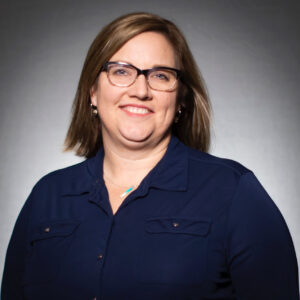Farming isn’t as simple as getting in the tractor in the morning and parking it in the evening – though some growers probably wish it was.
Today, farmers need to be skilled mechanics, savvy businesspeople and plant scientists. Not to mention software engineers with the amount of technology used in modern machinery and equipment.
It can be overwhelming, which is why growers often call upon experts to help guide them. The Farm Business Management program (FBM) is a key resource for farmers to make the best decisions for their operations.
“We help farmers understand the business,” said FBM instructor Betsy Jensen, who raises soybeans in Stephen and offers her management advice in a regular column in Prairie Grains Magazine. “Farmers love to produce but the business side is maybe not why they got into farming. I don’t have any production expertise to help them. But I do certainly have business expertise to help them understand financial statements so they can make educated decisions.”
Founded in 1953 as “an educational program for farm people that will enable them to more completely understand the economic system in which they live and work,” FBM is celebrating its 70th anniversary this year. The program has helped hundreds of farm families navigate the economic ups and downs since its inception.
“Originally, FBM was formed because of the veterans returning from World War II,” said AgCentric Executive Director Keith Olander, “but then it really grew out of the Vietnam and Korean War. It was a way to help them get trained postwar to enter into farming as a career. We’ve moved way beyond veterans, working with thousands of farms and we’ve expanded our programming.”
St. James farmer Rose Wendinger, an FBM instructor with South Central College since 2020, saw the program’s impact as a young girl, inspiring her to pursue her own FBM career.

“I grew up on a small dairy farm in Sibley County and watched my dad struggle through the 1980s and ‘90s,” said Wendinger, who also serves as Minnesota Soybean Growers Association secretary. “He started looking for resources outside of his lender that was going to be on his side of the table and found FBM. When our FBM instructor would come in, he gave my dad resources and ideas that would really lift up his spirits and help him continue on with the operation. It gave him a new outlook and an outlet to voice his concerns, along with resources and support. So, from a young age I always knew that I wanted to be that person for farm families.”
That experience drove Wendinger’s career. After graduating with an agribusiness and finance degree, she worked in ag lending for 10 years, gaining critical background experience to prepare her for FBM. Now, Wendinger works with more than 40 families, guiding them through the business aspect of their operations.
“Each farm that I work with is different,” Wendinger said. “It drives my passion to see how every farm family is doing so many things differently and finding unique ways to be successful. Offering them resources that work with their operation and their production style is incredibly gratifying.”
Changing dynamics
With the farming landscape drastically different compared to 1953, FBM has remained a dynamic program and constant ally for growers across Minnesota.
“Through all these decades, the financial cycle that we’ve been through as a country and that agriculture has been through hasn’t been stagnant,” Olander said. “Think about the high interest rate of the ‘80s. And then think about the drought along the way. FBM has supported farmers and built their resiliency through it all.”

To remain successful for so many years, Olander identified three key aspects of FBM that made its success possible, the first being centralized leadership. FBM’s common database and professional coordination has ensured its survival across several decades. Secondly, FBM focuses on farm economics, which has kept them relevant no matter the status of other factors.
“The economics are there no matter if it’s good times or bad times,” Olander said. “During the good times, you’re managing taxes and acquisition expansions while in tough times you’re trying to manage how to survive.”
Finally, FBM isn’t a “cookie cutter” program – it’s individualized. “Instructors are at your kitchen table every six to eight weeks and develop a trusting relationship,” Olander said. “And the faculty arrive with nothing to sell. Their objective is to help that farmer achieve their goals, both professionally and business-wise.”
Today, FBM has grown to more than 60 instructors with seven participating colleges, but their vision remains the same: to “provide educational opportunities for students to be successful in a competitive agricultural environment.”
When Minnesota growers need an ally to help them with economic decisions, FBM will be at their kitchen table ready to support their goals.
“A farm is a business, and the business is dynamic and always changing,” Olander said. “The markets change, the weather changes, the needs of the family change. Life happens. If that business remains stagnant, they might not survive. That’s what FBM is here for – to guide them through.”

